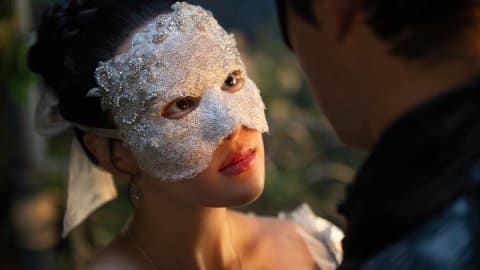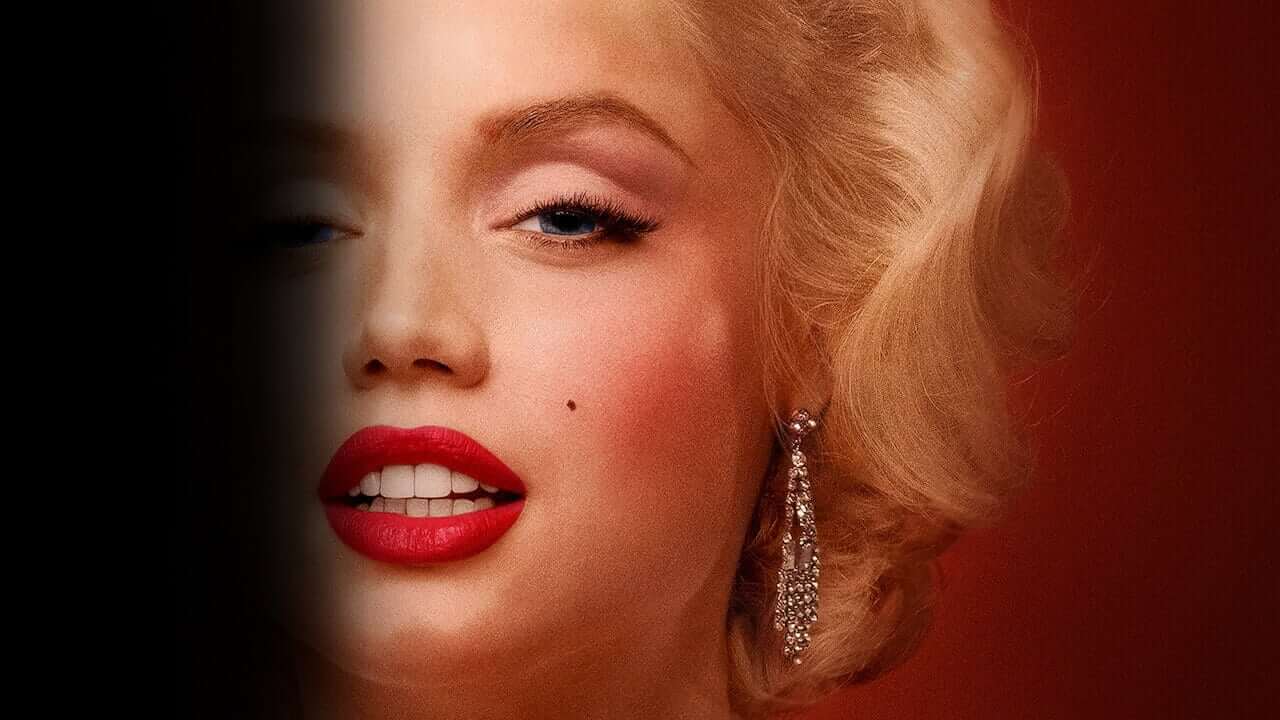
Blonde – Picture: Netflix
After 12 years of development, casting changes, production delays, & careful editing, Andrew Dominik’s BLONDE will finally arrive on Netflix on September 28th. Based on the novel of the same name by Joyce Carol Oates, this adaptation follows the fictional account of the inner life and terrible anguish of legendary actress & pop culture idol Marilyn Monroe.
The film stars Ana de Armas (Knives Out, No Time To Die) as the blonde in question Norma Jeane – yes, the extra “e” is intentional, more on that in a moment. Alongside her are Bobby Cannavale (The Irishman, Boardwalk Empire) as the “Ex-Athlete”, Adrien Brody (The Pianist, The Grand Budapest Hotel) as “The Playwright”, Caspar Phillipson (Jackie, Project Bluebook) as “The President”, and Toby Huss (Halt and Catch Fire, GLOW) as Marilyn’s makeup artist Whitey.

Now, before we get to the review, let’s get all the throat clearing out of the way about evasive names, NC-17 ratings, de Armas’ casting, and a few other hang-ups that may need clarity.
In 2000, Joyce Carol Oates wrote a book called “Blonde”, a fictionalized account inspired by the life of Marilyn Monroe.
The author Oates INSISTED on many occasions that the book was a work of fiction; however, that did not stop Monroe historians from taking the book to task. Within its pages lies what The New Yorker called “the definitive study of American celebrity,” where she uses Monroe’s story as a more modern take on “Moby Dick.” Still, it also has fabricated characters, conflated events, and false depictions of real people from Marilyn’s life.
In the late 2000s/early 2010s, director Andrew Dominik (Killing Them Softly, The Assassination of Jesse James By The Coward Robert Ford) started adapting Oates’ novel. Dominik “wanted to do a story about childhood trauma and how that shapes an adult’s perception of the world.” His original idea was to do that for a serial killer, but when he read Blonde, he thought, “well, I could do this with an actress, and it should be slightly more sympathetic.”
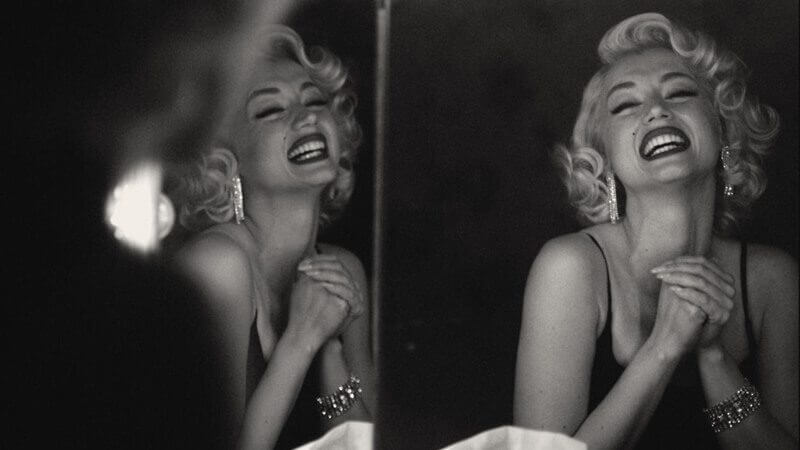
Picture: Netflix
Over the subsequent years, a few different actresses would be attached to the project in the lead role of Norma Jeane. At times, Jessica Chastain and Naomi Watts were notably attached, but both had to drop out for other commitments or because they aged out of the role. In March 2019, it was announced that Ana de Armas was in early negotiations to star in the film. Critics of this announcement would cite de Armas’ striking Cuban visage and distinct accent as a barrier to entry for success. Dominik himself admitted his doubts: “I had concerns until I saw her act, then I forgot what I was supposed to be concerned about.”
After a lengthy production slowed by Covid shutdowns, news of what the film is like started trickling into the world. Dominik noted that the script had “little dialogue” and the film itself would be an “avalanche of images and events”. The film is shot in Black & White AND Color without explaining why. Then, it was announced that the film would be rated NC-17, the first of its kind since 2013’s Blue is the Warmest Color. With graphic rape scenes taken directly from the novel, it is not a complete shock that the film might be too much for some to handle. Dominik stated, “It’s a demanding movie—it is what it is, it says what it says. And if the audience doesn’t like it, that’s the fucking audience’s problem. It’s not running for public office”.
Why do I mention all this? Because to review this film, or to even watch this film, you have to keep a lot of this in mind. It is not a biopic. It is not always truthful. It is also sometimes truthful. It is painful to watch. It is gorgeous to watch. It is a nightmare. It is incredibly dreamlike. It is a lot of things to a lot of people depending on the perspective you bring to the film. It is all these things. Blonde will be incredibly divisive, even if you can separate the facts from fiction.
Not to be compared with the megawatt mid-20th century icon biopic Elvis that loomed larger than life upon its arrival this past summer, Blonde has much more in common with the tragic fairytale recreations of Pablo Larrain, such as 2016’s Jackie and 2021’s Spencer, which take slices of iconic figures lives and portrays them through the prism of agonizing decisions made in suffocating & distressing times. Though Larrain’s films have also become incredibly divisive for taking liberties with legendary individuals, Blonde takes this to a whole new level. Taken whole cloth from the novel, the film takes the long view in its characterization of Monroe’s life. From a near fatal childhood at the hands of her mother to her death shrouded in mystery, Dominik examines mental illness & post-traumatic stress blown wide open with the trappings of superstardom & the toxic hellscape of the male-dominated studio system of the era. For critics and fans who thought Spencer was a gothic horror movie, you ain’t seen nothing yet. Over two decades of Norma Jeane’s life, she endures rapes, beatings, constant abandonment, & a haunting by the father who never came.
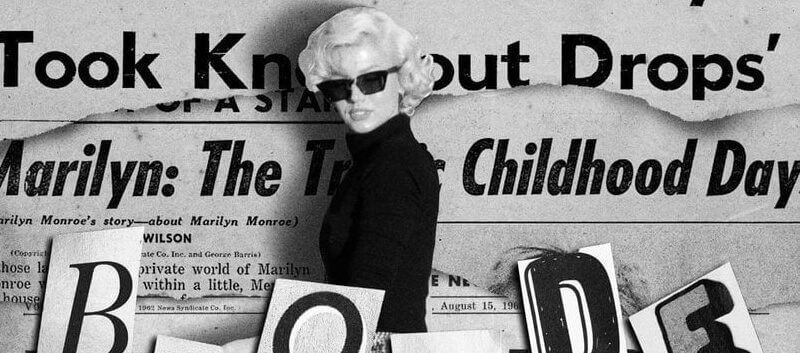
Picture: Netflix
While the themes explored here are admirable and timely, Blonde can take things to unwelcomed extremes. Conversation with an unborn fetus? Check. Multiple cervical shots from either end of the forceps during an abortion sequence? You bet. Forced fellatio on a sitting president? Yes indeed. Over the almost 3 hour runtime, the audience is constantly being kept off-balance by shifting from traditional biopic constructions to more abstract art school creations.
While the film is largely more effective than it is baffling, the one thing that I still reckon with is the use of an iconic figure to deliver its message and depict an era of exploitation. This is not a biopic, nor was the book a biography; however, is it inherently irresponsible to create moments in the life of someone that are completely false and mix them with painstakingly accurate details of that person? Are we relying on the audience to know the difference? Do these created events serve the story more than the real life of the person depicted? How do these creations change the lives of the other real-life people in the film or their families? How can we justify hearing the name “Marilyn Monroe” and not match up this story to the life that we have seen depicted in other forms many times over? I found myself thinking about these questions as much or more than the questions raised by the film itself. Will audiences take this as an art piece to be taken at face value or will they be clouded by the uber-famous face that the film does not disguise? Norma Jeane with an extra “E” may work better in novel form than on-screen.
Blonde is a relentless, #MeToo movement-inspired take on an icon gone way too soon. While the message is sound, its dance with the truth is less so and its extreme visual eccentricities even less. Ana de Armas put in an incredible amount of work to immerse herself into Marilyn and it shows. She does an incredible job of portraying Norma as the vulnerable & damaged PTSD survivor who yearned for the simple family life in which she was deprived. de Armas may be recognized this upcoming awards season, but I can’t see the film joining her in the spotlight.
Watch Blonde on Netflix If You Like
- Spencer
- Jackie
- The Assassination of Jesse James By The Coward Robert Ford
Who is the MVP of Blonde on Netflix?
Ana De Armas as Norma Jeane / Marilyn Monroe.
After multiple high-profile, blonde, white actresses could no longer do the part, De Armas stepped in to play one of the biggest icons in history. Many critics and Marilyn fans couldn’t see it and wanted to see her fail. However, in my opinion, she embodied enough of the spirit, look, and voice of her while having the range to pull off the spectrum of emotions required to paint the tattered tapestry that made up her life (or at least the life within the context of the film).
While maybe not the most enjoyable performance from Ana De Armas, it most certainly is her most impressive.
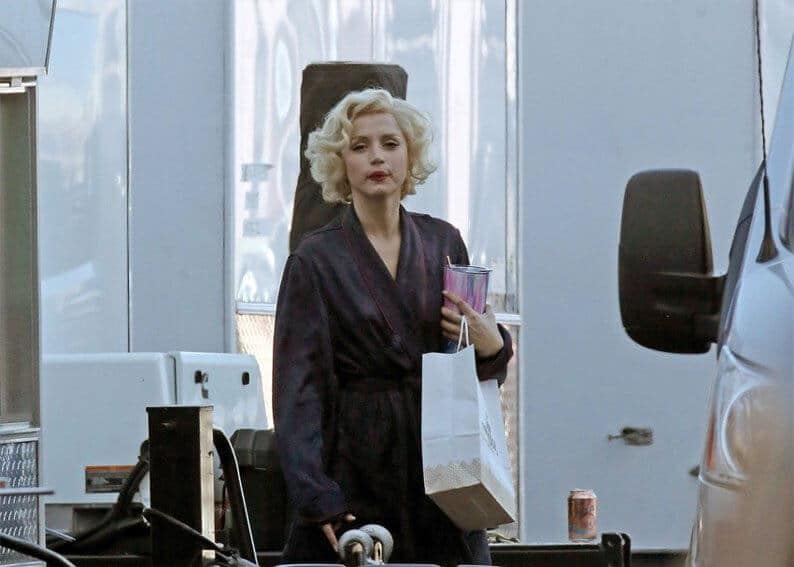
Picture: Netflix
PLAY, PAUSE, OR STOP? Blonde on Netflix
PAUSE.
Impressive & effective at times with striking Malick-inspired cinematography & a solid lead performance, but too many questionable content choices that strayed away from the important & timely subject matter.



